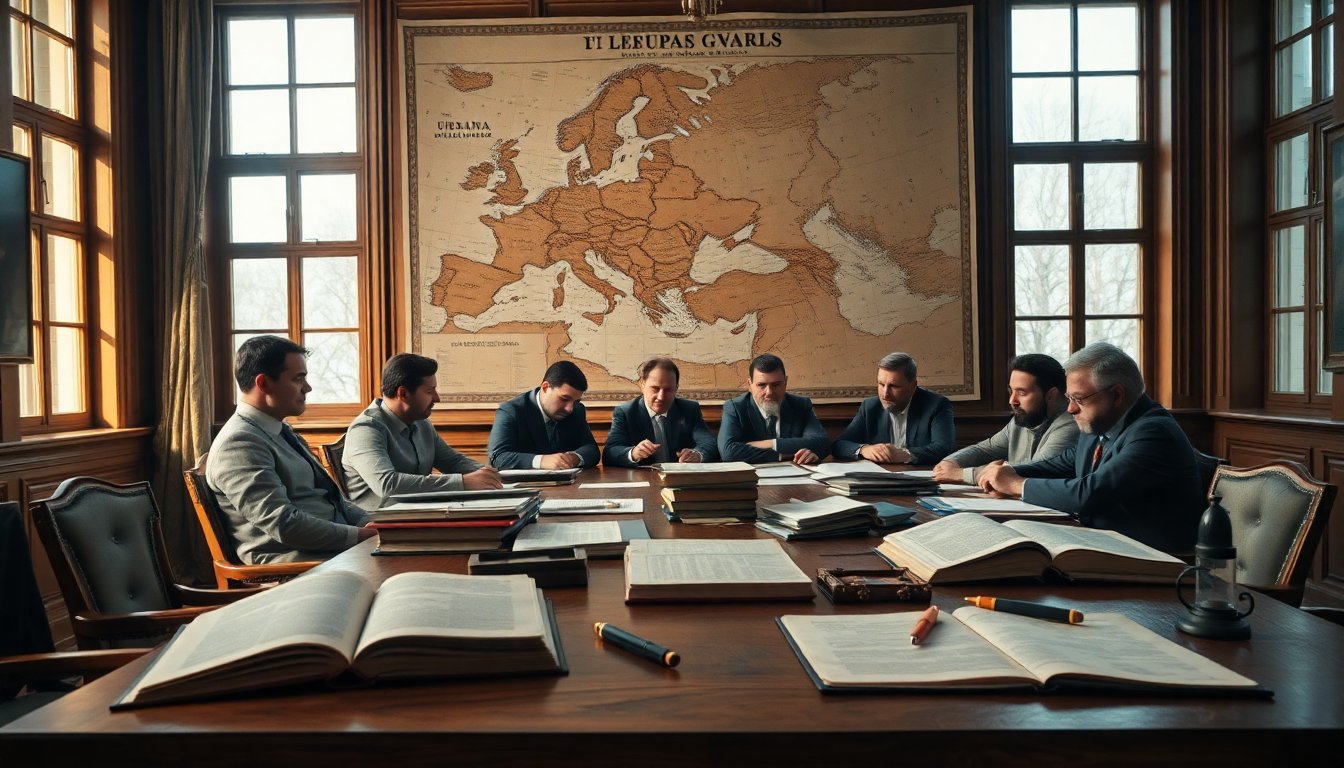Table of Contents
As Europe grapples with escalating tensions stemming from the conflict between Russia and Ukraine, officials have cautioned that the situation could lead to a catastrophic outcome reminiscent of the events that ignited World War I. Historian Alexey Uvarov reflects on the causes of that global conflict and their resonance with today’s geopolitical climate.
In his insightful work, The Sleepwalkers: How Europe Went to War in 1914, historian Christopher Clark emphasizes how people of that era perceived unfolding events. He argues that the perception of historical necessity was often a retrospective construct, leading individuals to believe that the course of events was preordained. This phenomenon, described by Clark as the normative force of the factual, fosters a sense of fatalism that obscures the myriad decisions and miscalculations that characterized the months leading to the war.
The miscalculations of 1914
Clark asserts that the notion of war being inevitable is a dangerous illusion that absolves leaders of personal responsibility. By framing their choices as dictated by historical forces, they avoided confronting the consequences of their actions. By spring 1914, many European governments had accepted an escalating confrontation as unavoidable, pushing them closer to conflict. Decisions made under the belief of predestined outcomes led to the abdication of responsibility, enabling a cascade of choices that culminated in war.
After the assassination of Archduke Franz Ferdinand in Sarajevo, it was not a foregone conclusion that all nations were eager for war. The leadership of Austria-Hungary deliberated their response for several weeks, with significant dissent against a military solution. Notable figures, such as Hungarian Prime Minister István Tisza, expressed apprehension about engaging in conflict. It was only on July 23, 1914, that Austria-Hungary issued a stringent ultimatum to Serbia, triggering events that would plunge Europe into war.
The ultimatum’s demands
The ultimatum delivered by Austria-Hungary to Serbia contained ten stringent demands, including the prohibition of anti-Austrian propaganda and the dissolution of nationalist groups. It called for punishment of those involved in the assassination and insisted on allowing Austrian officials to enter Serbian territory for investigations. Despite Serbia’s involvement in the conspiracy through the Black Hand organization, linked to Serbian military intelligence, the Serbian government considered acquiescing to the ultimatum’s demands. However, conflicting opinions within Serbia’s leadership led to a lack of consensus.
Russia’s role and the subsequent escalation
In the wake of rising tensions, Russia positioned itself as a protector of Serbia, driven by interests in the Balkans and a desire to counter Austrian expansion. Between July 26 and July 29, 1914, Russian officials debated mobilization as a means of applying pressure on Austria-Hungary. Ultimately, military leaders convinced Emperor Nicholas II that only full mobilization would safeguard Russian interests. Consequently, on July 30, the order for general mobilization was signed.
Amid these rising tensions, diplomatic efforts aimed at de-escalation were made. Nicholas II sought to communicate with Kaiser Wilhelm II of Germany, proposing to halt mobilization if Austria-Hungary refrained from attacking Serbia. Germany protested Russian mobilization while expressing a desire to avoid conflict. However, St. Petersburg refused to retract its order, leading to Germany declaring war on August 1, 1914.
The unraveling of alliances
Germany’s demand for neutrality from France, coupled with its insistence on marching through Belgium, initiated a rapid sequence of events. When France declined to provide guarantees against supporting Russia, Germany declared war on France and invaded Belgium on August 3. This violation of Belgian neutrality compelled Britain into the conflict, as it had long guaranteed Belgian independence. On the evening of August 4, 1914, Britain declared war on Germany, marking the official entry of another major power into the war.
The decline of the Ottoman Empire and tensions from the Balkan Wars exposed significant flaws in European diplomatic frameworks, emphasizing the lack of standardized methods for conflict resolution. Within this environment of distrust, leaders acted hastily, often opting for aggressive stances rather than seeking diplomatic solutions, exacerbating the situation.
Lessons for today
While the idea of a short, decisive conflict was prevalent among some leaders in 1914, this oversimplification fails to capture the complexities of the era. Key figures recognized the potential for a drawn-out and devastating war. As tensions rise in modern Europe, particularly regarding Ukraine, it is crucial for today’s leaders to learn from history. The contemporary landscape offers far more developed systems of international diplomacy, providing avenues for negotiation and conflict resolution.
In his insightful work, The Sleepwalkers: How Europe Went to War in 1914, historian Christopher Clark emphasizes how people of that era perceived unfolding events. He argues that the perception of historical necessity was often a retrospective construct, leading individuals to believe that the course of events was preordained. This phenomenon, described by Clark as the normative force of the factual, fosters a sense of fatalism that obscures the myriad decisions and miscalculations that characterized the months leading to the war.0


